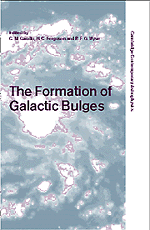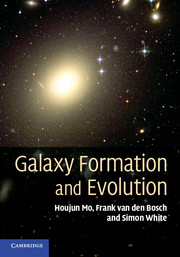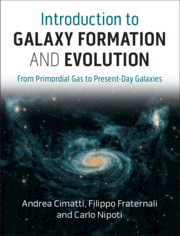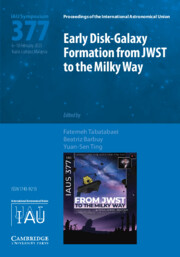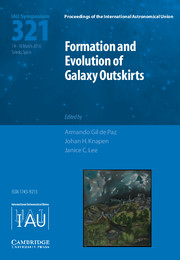The Formation of Galactic Bulges
Bulges lie at the center of spiral galaxies. Until recently, they were thought to be one of the oldest components in galaxies and thus a key to understanding galaxy formation. Recent observations have drastically changed this view. This volume presents review articles by a panel of international experts who gathered at a conference at the Space Telescope Institute in Baltimore to develop a coherent and global picture of our present understanding of the field. The specialists are from all fields of galactic astrophysics, including R. Carlberg, M. Dickinson, B. Elmegreen, C. Frenk, G. Gilmore, K. Kuijken, D. Pfenniger, J.P. Ostriker, A. Renzini, M. Rich, and H.W. Rix. This volume will be invaluable for all those interested in galaxy formation.
- A state-of-the-art picture of our understanding of the fundamental building-blocks of galaxies
- A stimulating reference point for all those interested in galaxy formation
- The first book to present the new understanding of galactic bulges and what they can tell us about galaxy formation which has emerged from observations in the last two years
Reviews & endorsements
"The volume is useful for all workers in the field of galactic and extragalactic astronomy concerned with formation and evolution of our own and other galaxies. Rather than being just a 'snap-short' of current understanding, it will serve for some time as a standard reference in the field, providing the foundations on which research in this area in the near future will rest." Space Science Review
Product details
May 2012Adobe eBook Reader
9781139244312
0 pages
0kg
83 b/w illus. 5 tables
This ISBN is for an eBook version which is distributed on our behalf by a third party.
Table of Contents
- Part I. Introduction: What are galactic bulges?
- Part II. The Epoch of Bulge Formation: Origin of bulges
- Deep sub-mm surveys: High-z ULIRGs and the formation of spheroids
- Ages and metallicities for stars in the galactic bulge
- Integrated stellar populations of bulges: First results
- HST-NICMOS observations of galactic bulges: Ages and dust
- Inside-out bulge formation and the origin of the Hubble sequence
- Part III. The Timescales of Bulge Formation: Constraints on the bulge formation timescale from stellar populations
- Bulge building with mergers and winds
- Role of winds, starbursts, and activity in bulge formation
- Dynamical timescales of bulge formation
- Part IV. Physical Processes in Bulge Formation: the role of bars for secular bulge formation
- Bars and boxy/peanut-shaped bulges: an observational point of view
- Boxy- and peanut-shaped bulges
- A new class of bulges
- The role of secondary bars in bulge formation
- Radial transport of molecular gas to the nuclei of spiral galaxies
- Dynamical evolution of bulge shapes
- Two-component stellar systems: Phase-space constraints
- Central NGC 2146 - a firehose-type bending instability?
- Bulge formation: the role of the multi-phase ISM
- Global evolution of a self-gravitating multi-phase ISM in the central kpc region of galaxies
- Part V. Bulge Phenomenology: Bulge-disk decomposition of spiral galaxies in the near-infrared
- The triaxial bulge of NGC 1371
- The bulge-disk orthogonal decoupling in galaxies: NGC 4698 and NGC 4672
- The kinematics and the origin of the ionized gas in NGC 4036
- Optically thin thermal plasma in the galactic bulge
- X-ray properties of bulges
- The host galaxies of radio-loud AGN
- The centers of radio-loud early-type galaxies with HST
- Central UV spikes in two galactic spheroids
- Conference summary: where do we stand?

